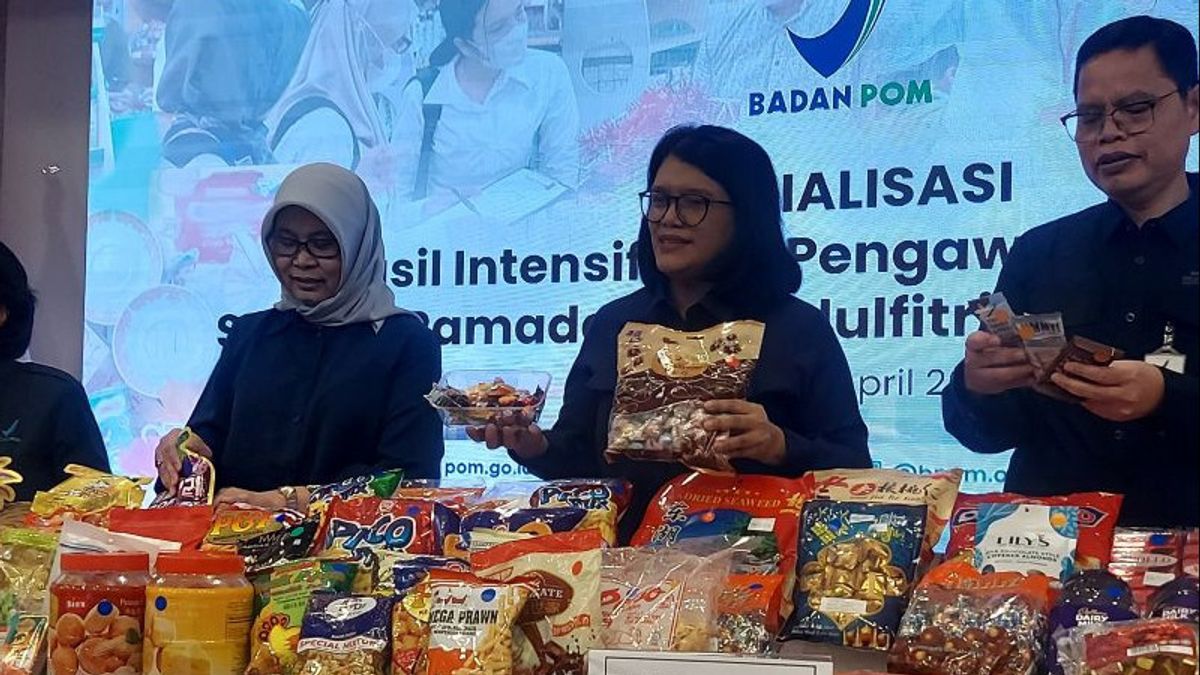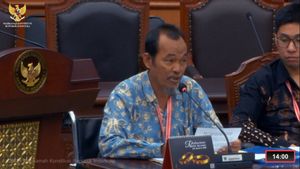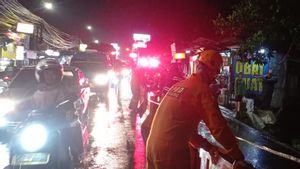
JAKARTA - The Food and Drug Supervisory Agency (BPOM) announced that 9,262 processed food samples for the takjil menu circulating in the market during Ramadan 1445 Hijri/2024 were detected to contain a number of chemical compounds that could potentially endanger consumer health.
"There are very many takjil sellers. Some have the potential for danger of ready-to-eat food, such as Rhodamin B dyes, formalin so as not to be easily stale or damaged, especially foods containing a lot of water such as agar and noodles," said Acting Head of BPOM Lucia Rizka Andalusia as reported by ANTARA, Monday, April 1.
Rizka explained that the takjil surveillance data held simultaneously at all BPOM branch offices in the regions involved 3,749 takjil traders at 1,057 monitoring locations.
The results, he said, of the total 9,262 samples examined, 48.04 percent contained formaldehyde in yellow, anchovy, tofu, benchmark samples, agar, squid, pedai, and terasi.
A total of 25.49 percent contained Rhodamin B on takjil cendol products, pearls, sand crackers, red jelly, red larvae, Chinese girlfriends, and rainbow noodles.
관련 항목:
Then about 27.45 percent of takjil snacks are known to contain bolax based on examinations in crackers, cao, cendol, cilok, brains, intestinal satay, shells, shrimp, tofu, and anchovy samples. Meanwhile, 0.98 percent are known to contain Metanyl yellow in orange tofu products.
Rizka said that bolax compounds are generally misused by unscrupulous traders in soft food products such as meatballs and cendol. While yellow coloring generally occurs in tofu.
"This compound is not safe for consumption. This compound is used for textile dyes, not for food. Formalin, even for corpse preservatives, can imagine the impact on humans," he said.
The impact of consuming food contains dangerous chemicals, said Rizka, can be categorized as light to severe.
"If it is heavy, it is carcinogenic or can cause cancer. If it is mild, it usually nausea, vomiting, and dizziness, such as poisoning in general," said Rizka.
The English, Chinese, Japanese, Arabic, and French versions are automatically generated by the AI. So there may still be inaccuracies in translating, please always see Indonesian as our main language. (system supported by DigitalSiber.id)










